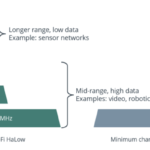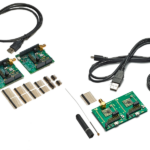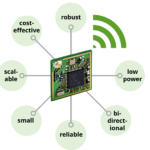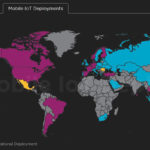Continues from Part 1 FAQ on Low-Power Wide Area Network (LPWAN) technology & implementation
6. What are some of the LPWAN design considerations?
There are many criteria a business can consider when trying to decide on the best LPWAN solution.
For example, how quickly do you need the IoT device to transfer the data, how much data do you need to transfer, how large must the data packet be, and how far do you need to transmit the data? In addition, how energy-efficient must the device be, how much mobility do you require, and how long should the battery last? Lastly, how do you want to provide network security for your data – on your own or through carriers?
In designing a new LPWAN network, security requirement is very important. Security experts have always warned that cyberattacks are on the rise and will only get worse. However, security is fluid. Even though LPWAN has provided detailed security design specifications, achieving security is an ongoing challenge and requires regular fine-tuning.
“I was once told by a cybersecurity expert ‘Security is something you get, not something you buy.’ No matter which network one chooses, i.e. one buys, security will require ongoing attention if it is to be sustained.” Scott Nelson, CEO/CTO, Reuleaux Technology.
In short, LPWAN design considerations can be summarized in the following checklist:
- Speed requirement
- Power consumption
- Application type
- Availability of hardware and software solutions
- RF band consideration
- Security requirement
- Product life and design support
- Cost
7. How to implement an LPWAN network?
We can convolve the above-mentioned criteria down to some binary choices, such as start with a module or chip, customizing hardware or buying off-the-shelf, private cloud or public cell-based cloud. Both the LoRa Alliance and LTE-M/NB-IoT carriers offer their own certification. The LoRa Alliance has a streamlined, in-house process to certify products for LoRaWAN devices. The LoRa Alliance certification guarantees interoperability among the certified devices.
LTE-M/NB-IoT carriers, on the other hand, guarantee interoperability between LTE-M/NB-IoT devices and the specific carrier. AT&T, Verizon, and T-Mobile, for example, offer their own unique certification programs. Many of the LPWAN modules have already obtained their corresponding certification from either LoRa Alliance or the LTE carriers. In designing a new network, if device performance reliability is important to you, choosing certified devices will give you assurance.
Buying off-the-shelf modules saves time but limits design flexibility. On the other hand, starting with chips and customizing hardware is more time- and labor-intensive, but offers better alignment between hardware and software for a given application.
The purpose of carrier certification is to ensure interoperability and prevent damage done to the network by the LTE device. Depending on the readiness of the device, the certification process can take as long as one year. However, using one of the 200 AT&T pre-certified LTE modules, the network device can be certified quickly. (See link below). “We have a simple process for certification of IoT devices that ensures they are ready for operation on our networks with maximum efficiency. Certification can be achieved within a day for most devices using a module that is already approved by AT&T. We aim to support our customers in building the best products while protecting our network at the same time,“ according to Cameron Coursey, vice president, Advanced Technical Solutions, AT&T.
8. What are the budget considerations?
A business needs to consider if it wants to spend money on the a licensed spectrum. There are service fees for LTE-M/NB-IoT but the spectrum cost is free for LoRaWAN, which uses ISM bands. ISM bands stand for the Industrial, Scientific, and Medical frequency band (2.4GHz) reserved for the equipment use.
There are advantages to both that should be considered in the context of your business model and products. Overall, the budget can be broken down into the following categories:
- the process of product development (R&D)
- LPWAN certification cost
- bills of material (BOM) costs including the LPWAN module or chip
- Carrier service charge if LTE-M or NB-IoT is deployed
The R&D costs vary greatly depending on the structure of the organizations and the process involved. (See link below). The certification process can be very labor-intensive. If a pre-certified module is used, it will save our great deal of time and the cost of an application can be quite reasonable. But if a company starts from scratch and go through the whole certification process, it may take up to a year with multiple trials before passing. In this case, the total cost of certification including R&D and overhead can potentially exceed 1,000,000 dollars according to the experience of a module manufacturer.
For the BOM consideration, the costs will range from $200 to $1000 for a development kit, $5 to $60 for a module depending on what features are included, and less than five dollars for silicon depends on the purchase volume. The annual carrier service charge for LTE-M or NB-IoT is $12 to $30.






